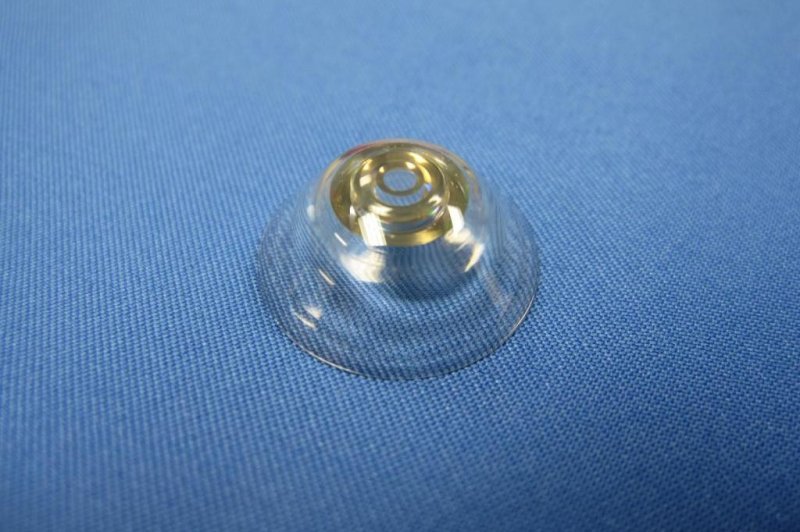Lens prototype with built-in zoom. Photo by Eric Tremblay and Joe Ford/EPFL
SAN JOSE, Calif., Feb. 13 (UPI) -- A group of researchers at the American Association of the Advancement of Science conference on Friday unveiled a working contact lens prototype with a built-in zoom feature.
The contact lens is really two lenses in one -- one lens for seeing the world as it is, another to magnify one's surroundings by a factor of three. A single wink (the blink of one eye), will trigger the switch back and forth between the two lenses. In order for the unique function to work, the user must couple the contact lenses with a special pair of electronic glasses.
The glasses recognize winks, while ignoring blinking. A wink triggers the glasses to filter and concentrate light through the telescopic portion of the contact lenses, enabling instant magnification of what lies in the forefront of the user's field of vision. Magnification is triggered with the right eye, while a return to normal is signaled with the left eye.
"The most compelling reason why you would want to have this is to help people with serious visual problems, such as macular degeneration, or other retinal illnesses where people have severe vision loss," lens designer Dr. Eric Tremblay, a researcher at the Swiss Federal Institute of Technology, explained to The Telegraph.
"In a lot of cases, magnification is very useful," Tremblay said. "So what people usually use are head-mounted telescopes, which doesn't work for everything. It doesn't track with vision, and it's quite bulky and interferes with social interaction."
The work of Tremblay and his colleagues was made possible by a grant from DARPA, the Defense Advanced Research Projects Agency.
"DARPA funds things that are really out there -- forward-thinking stuff," Tremblay told Engineering and Technology Magazine.
The new lens is only a prototype, and is just being tested by volunteers for the first time. Initial reviews have been mixed, with several users saying that while the functionality was good, their vision was blurred.
Tremblay says it could be two years before they have a lens that's ready for market.















